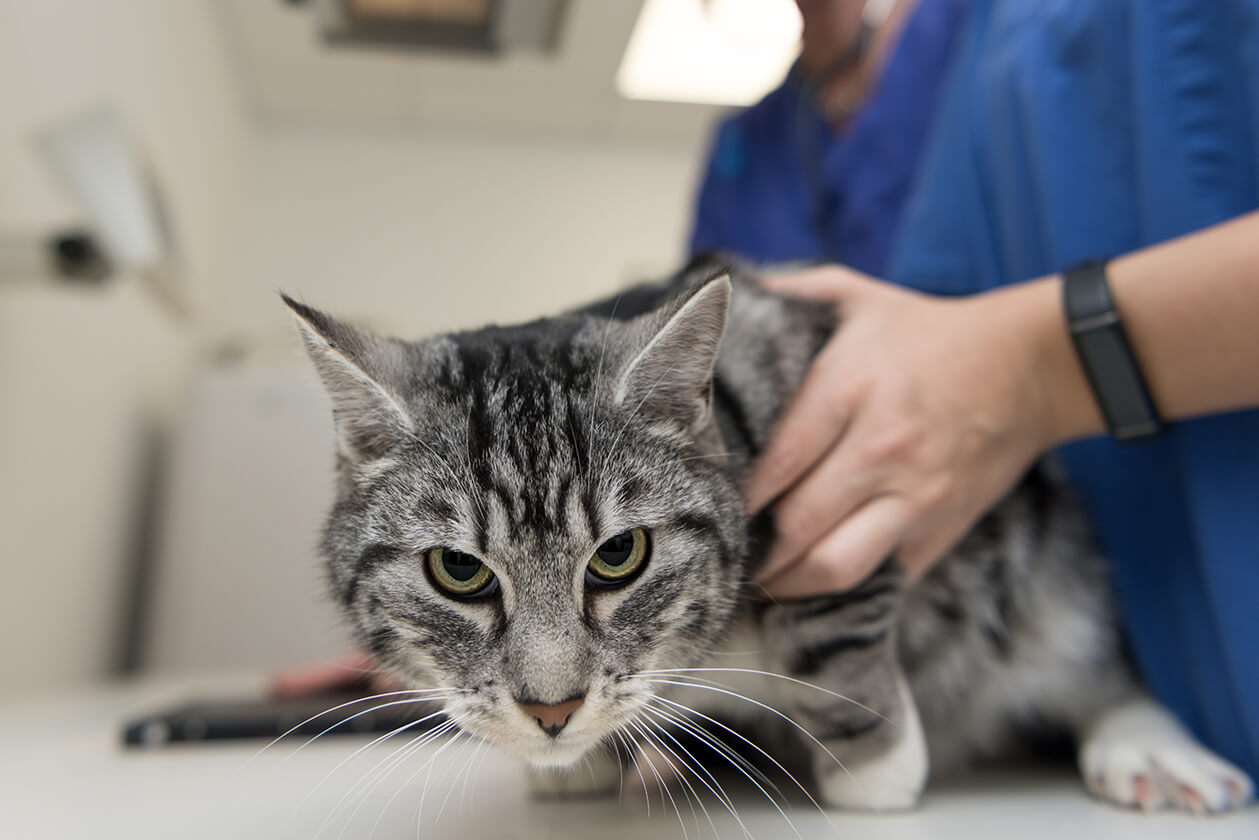
- by Dr.Thilo Senst
How to Prevent a Cat from Licking Its Wound: Best Solutions
- by Dr.Thilo Senst
How to Prevent a Cat from Licking Its Wound: Best Solutions
Cats are notorious for their meticulous grooming habits, which often means they instinctively lick their wounds. While licking is part of a cat's natural response to an injury, excessive licking can cause complications, delaying healing and potentially leading to infections. Understanding how to manage and prevent a cat from licking its wounds is crucial for pet owners. This guide explores various techniques, products, and tips to ensure a smooth healing process for your cat.
Cats have a natural instinct to groom, and this extends to licking wounds. The licking action helps clean the wound initially by removing dirt or debris. Saliva contains enzymes that offer mild antibacterial properties, but excessive licking can harm the wound’s surface, disrupt healing, and, in some cases, lead to infection.
When cats continually lick a wound, it prevents the wound from scabbing and healing properly. This can lead to a cycle of inflammation and irritation, creating what’s known as a “lick granuloma.” According to Cats Protection, a leading UK charity, excessive licking and scratching are leading causes of secondary infections in cats with minor injuries.
Allowing a cat to lick its wound can lead to:
In short, preventing excessive licking is essential to promoting rapid and healthy healing.
The traditional e-collar, or “cone of shame,” is an effective solution for keeping cats from reaching their wounds. These collars form a protective barrier around the cat’s head, preventing it from accessing wounds on its body.
Pros:
Cons:
For a more comfortable alternative, soft collars or inflatable collars are available. These work similarly to e-collars but provide additional comfort, as they are typically softer and less intrusive.
Pros:
Cons:
Applying a bandage to the wound can act as a barrier, making it harder for your cat to access the wound. Use self-adhesive bandages to prevent accidental unwrapping, and ensure the bandage is not too tight, as this could restrict blood flow.
Pros:
Cons:
Applying a bitter spray near the wound can deter cats from licking due to the unpleasant taste. These sprays are pet-safe and designed to discourage licking behaviour without harming the wound itself.
Pros:
Cons:
It’s crucial to keep the wound area clean to avoid infection. For minor cuts or abrasions, gently clean the area with saline solution or a pet-safe antiseptic solution. Avoid using human antiseptics, as they may contain ingredients harmful to cats.
Look out for swelling, redness, or discharge, as these may indicate an infection. If you notice any of these signs, consult your vet immediately for appropriate treatment.
A calm environment can play a role in your cat’s healing process. Stressed or anxious cats are more likely to over-groom or lick excessively, so creating a peaceful space for recovery is beneficial.
Introduce e-collars or soft collars gradually by letting your cat wear it for short periods initially, rewarding them with treats or affection. This approach can help reduce stress and build positive associations.
Keeping your cat mentally engaged can deter them from focusing on the wound. Use toys, treats, or puzzle feeders to divert their attention, particularly when they show signs of licking.
If your cat appears anxious during recovery, consider natural calming products like Dr. Senst Cat Calming Hemp Oil for Cats. Such products can ease stress, making it less likely that your cat will obsessively groom or lick the wound.
Aloe vera is a natural antiseptic and provides soothing relief, making it an excellent option for small, superficial wounds. Be cautious to use only products specifically formulated for pets, as pure aloe can be toxic if ingested.
Coconut oil is known for its antibacterial and anti-inflammatory properties. Applying a small amount to the wound can help speed healing and provide a barrier to deter licking.
A cooled chamomile tea compress can help reduce inflammation and provides a mild antiseptic effect. Apply a damp tea bag to the wound area for a few minutes daily to support the healing process.
Q1: Can I use a human bitter spray to deter my cat from licking its wound?
A: No, always use sprays designed for pets. Some human products contain ingredients that are harmful to cats if ingested.
Q2: How long does a wound typically take to heal in cats?
A: Healing time varies but usually ranges from a few days to a week for minor cuts. Deep or infected wounds may take longer and require veterinary assistance.
Q3: My cat is still licking despite the deterrents; what should I do?
A: If your cat persists in licking the wound, consult your vet. They may recommend alternative methods or additional treatments.
Q4: Is it normal for a wound to be red around the edges?
A: Mild redness around the wound is normal during the initial healing stage. However, if the redness persists or worsens, it may indicate infection, requiring vet attention.
To support your cat’s healing journey, I recommend Dr. Senst Antiseptic Cat Wound Relief Spray as an effective, pet-safe antiseptic solution to clean and protect wounds. Additionally, Dr. Senst Cat Calming Hemp Oil for Cats can help reduce stress and prevent excessive licking during the recovery period. These products provide a holistic approach to wound care, ensuring your cat is comfortable and safe.
![]()
Enter your details & download our comprehensive 50+ page printable Dr. Senst Pet Care Planner completley FREE! - keep track of all your pet’s needs, from medical history and training to vet visits, grooming, diet, and more!










Share:
Top Natural Flea Repellents for Dogs
How to Treat Cat Ear Mites at Home: A Step-by-Step Guide